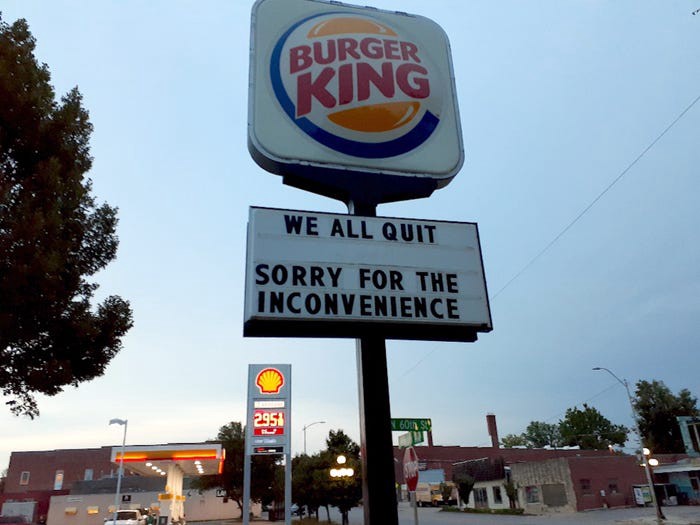Ways of Working Disruption is Here
Enabling high performing virtual teams and leaders is critical as they are the execution engine to deliver upon your strategic customer outcomes.
7 min read
Dr. Marc Sniukas
Feb 7, 2023 12:00:00 AM
Dramatic changes are currently happening in our working culture. Work from home. Hybrid work. The great resignation. Agile transformations. Purpose over profit. Self-Management. Team of Teams. The “lying flat” movement in China…to name just a few.
And while the pandemic has certainly accelerated these changes, they have been on the horizon for decades.
Books like Frederic Laloux’s “Reinventing Organizations” or Stanley McChrystal’s “Team of Teams” might have made the discussion popular in recent years, yet, the beginnings go back to at least the early 1990s.
Ricardo Semler, for example, wrote about how he turned the factory he inherited from his father into a self-managing organization in 1994. The Drucker Foundation published an anthology titled “The Future of Organization” in 1996. It contains many ideas foundational to today’s new ways of working discussion: purpose, multi-disciplinary teams, networks of teams, ecosystems, welcoming change, servant leadership, the need for learning through experimentation, employee engagement, etc.
I first came across “The Future of Work” idea through Thomas Malone’s book of the same title almost 20 years ago. (The book was based on research done as part of MIT’s “Inventing the Organizations of the 21st Century” initiative launched in 1994.) Malone elaborated on topics such as loosening the hierarchy, moving towards networks and internal markets, decentralization and democratization of decision-making, and moving from command-and-control to coordinate-and-cultivate as key leadership tasks….all of the fashionable topics of today.
Shortly after that, Gary Hamel wrote “The Future of Management”. That was in 2007. Hamel illustrated how organizations like, for example, Whole Foods, W.L. Gore and Google focus on a shared purpose, building organization-wide innovation capabilities, and empowering people by changing how management is carried out.
This book got me hooked on the idea of “organizational innovation” and reinventing how we work, organize, and manage; a practice also labelled “management innovation “by Hamel or Julian Birkinshaw, for example.
And even though we might argue that not many organizations have picked up the practices of these mavericks and vanguards of progressive organizations in the last 10 or 20 years, more and more are doing so now.
Most organizations and managers have seen the limitations and shortcomings of traditional, industrial ways of working, organizing and leading. The pandemic has made them painfully transparent while at the same time showing and convincing us that a different way is feasible, viable, and desirable.
What I’m outlining in the next couple of paragraphs is undoubtedly not new. There’s a vast and growing body of knowledge on the topic of new ways of working available. My objective is to add value by synthesizing the current discussion and making it more accessible.
We have come to assume that the industrial management model is the only valid one. Yet, we tend to forget that the current state of working, organizing, and leading is not the natural order of things.
Just like most things around us, the way we work today was invented at a particular point in time for a specific purpose. And while it might have been the best model in the past, and possibly still is the best model today for some industries, types of business, or specific organizations, we shouldn’t hesitate to question and adapt it to our needs and business environment as required.
You have to remember that industrial management was invented for a specific context:
Many businesses today are in a different situation:
(Besides: The “scientific “basis of scientific management is very questionable, as Matthew Stewart analyzes thoroughly in “The Management Myth “.)
Scientific management also brought about hierarchies and bureaucracy. Without going into the details, we all know what it feels like to be stifled by the often absurd rules, policies, processes, and systems put on us. It should suffice to say that bureaucracy is no longer fit to deal with the complexities of today’s business needs (VUCA anybody?).
Bureaucracy was built for:
in a world of poorly educated workers, as outlined above.
And while some of these traits might still be important today (efficiency, for example), most organizations also need outcomes that industrial management is not good at delivering:
Harvard Business Review calculated that bureaucracy costs the U.S. economy 3 trillion in lost economic output per year…I rest my case.
Our prevailing management model has failed us on both a macro and micro level.
On a macro-level, our management model has led to organizations losing their competitive edge, going bankrupt and entire industries being squandered as Julian Birkinshaw argues in “Reinventing Management “with examples like Lehman Brothers and General Motors.
On a micro-level, our ways of working have led to 85% of employees being disengaged at work (as shown by the yearly Gallup engagement surveys), people rather being alone than spending time with their boss, (see Richard Layard “Happiness “), management being seen as one of the least trustworthy professions (another Gallup study), and, more recently, the Great Resignation in the U.S. and the Lying Flat movement in China. And, don’t think it’s mostly low paying jobs. It’s rather mid-career professionals (see Ian Cook).

(Funny thing: The other day, I saw an article published by MIT Sloan that proclaimed “time with the boss “as a reason for coming back to the office. So we might need to re-evaluate that argument.)
If you need further proof, just look at the thousands of YouTube videos available promising that you can escape the 9–5 grind. I don’t want to discuss the quality of these offerings, but the sheer fact that there are so many is proof that there’s a market and people are longing for an escape from their industrial management type of job.
Employees are just no longer putting up with it.
Our management model has not only failed our organizations and employees, but it has failed our leaders and managers too. Many executives I talk to are exhausted. They are overwhelmed by the expectations put on them by the utopian fantasy that a manager needs to be the all-knowing expert, universal problem solver, and single decision-maker. After all, if we don’t want to be bothered, don’t want to think for ourselves or simply want to cover our ass, we escalate the matter to our boss, don’t we? And they are frustrated by the lack of impact they have using the traditional ways of working. According to Gallup, stress, burn-out, and diagnosed depression among managers increased significantly in 2021.
If these arguments are not enough to convince you, consider the benefits you could achieve.
There is a growing body of evidence proving that organizations which apply modern ways of working, organizing, and managing/leading, reap tremendous benefits:
Improved bottom-line results
Higher customer satisfaction
Increased productivity
Increased speed of execution
More engaged employees
Here’s a link to a list of sources. This is work in progress and will be updated.
Hence, I believe that your ways of working, organizing, and managing/leading can be sources of competitive advantage that are well worth considering. You certainly don’t want to fall behind those who embark on the journey before you, do you?
New Ways of Working, Agile Transformation, Humanocracy, Holacracy, Future of Work, Adaptable Organization, Responsiveness…New Ways of Working go by many names. I will use the term “Human-Centric Ways of Working” going forward.
Human-centric means a couple of things to me:
At the same time, you want your organization to perform. This requires:
The ultimate goal to me is, as Stephen Denning puts it in “The Age of Agile “, to install management practices and ways of working that “…treat people as people and engage in authentic adult-to-adult conversations “while operating “… in a way that is potentially better for those doing the work, better for those for whom the work is done, better for the organizations themselves, and better for society. “
The organization of the future has to be performant AND human.
At the core of Human-Centric Ways of Working lie a set of principles, which I refer to as the “DNA of the Human-Centric Organization”.
In work I did with executives and organizations in recent months, we found it helpful to differentiate between “3 levels of application”:
Next week, we’ll dive into the details of these three levels of application.
This article marks the beginning of a regular series on new, human-centered ways of working, organizing, and leading. In the future, we will explore the topic in all its facets.
If you have New Ways of Working or Future of Work in your title or are “just interested” in new, human-centric ways of working, the Brave New Leaders are your tribe.
Make sure to follow Brave New Leaders, and sign up for the newsletter below to receive future articles and more. You can also follow us on LinkedIn and get the LinkedIn newsletter if you prefer.
Here‘s a list of the sources mentioned throughout this article:

Enabling high performing virtual teams and leaders is critical as they are the execution engine to deliver upon your strategic customer outcomes.

You can’t transform into new ways of working by applying the traditional change management principles.
 Read More
Read More